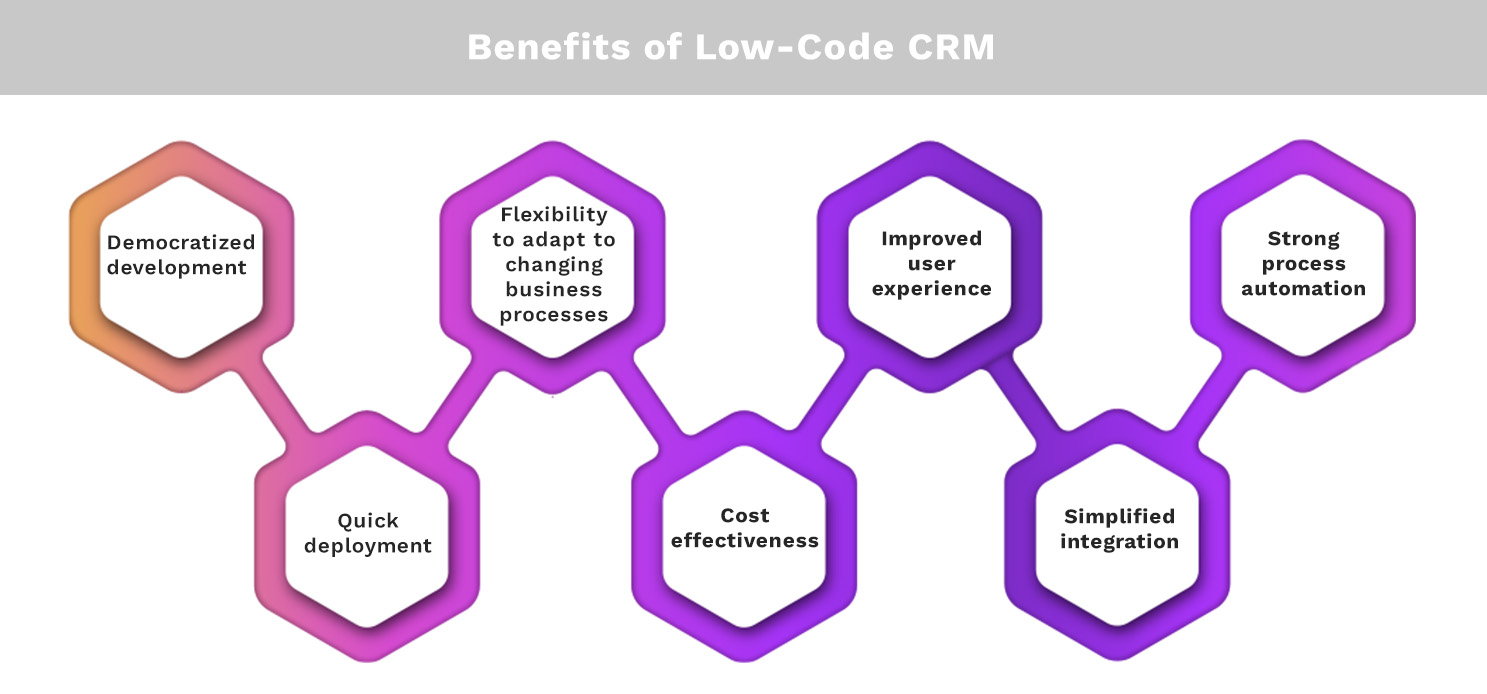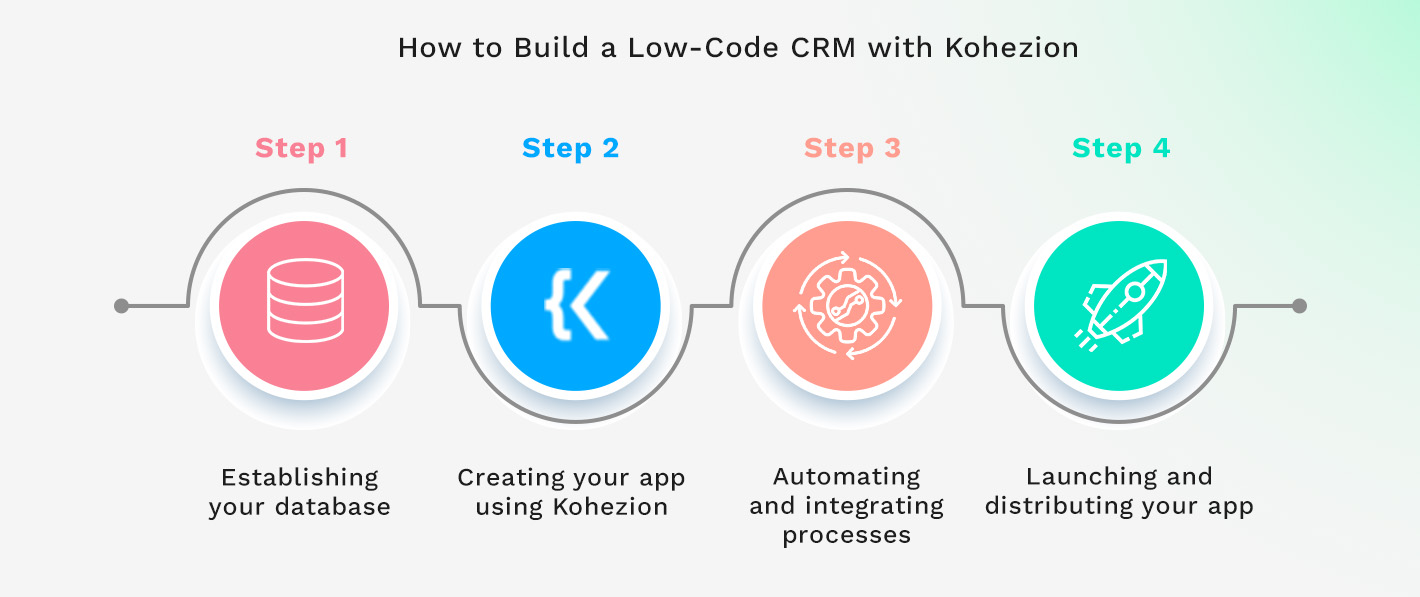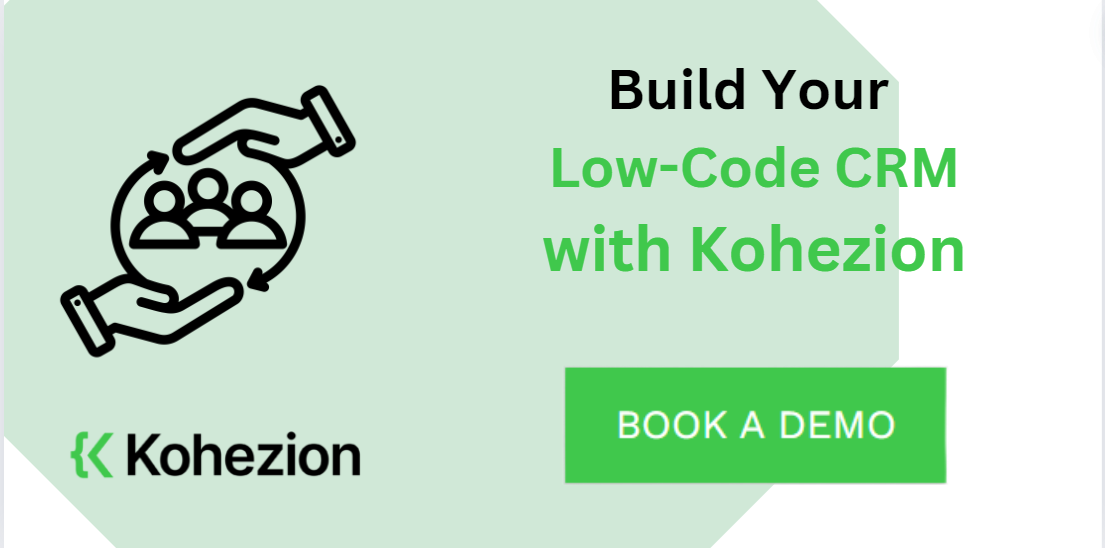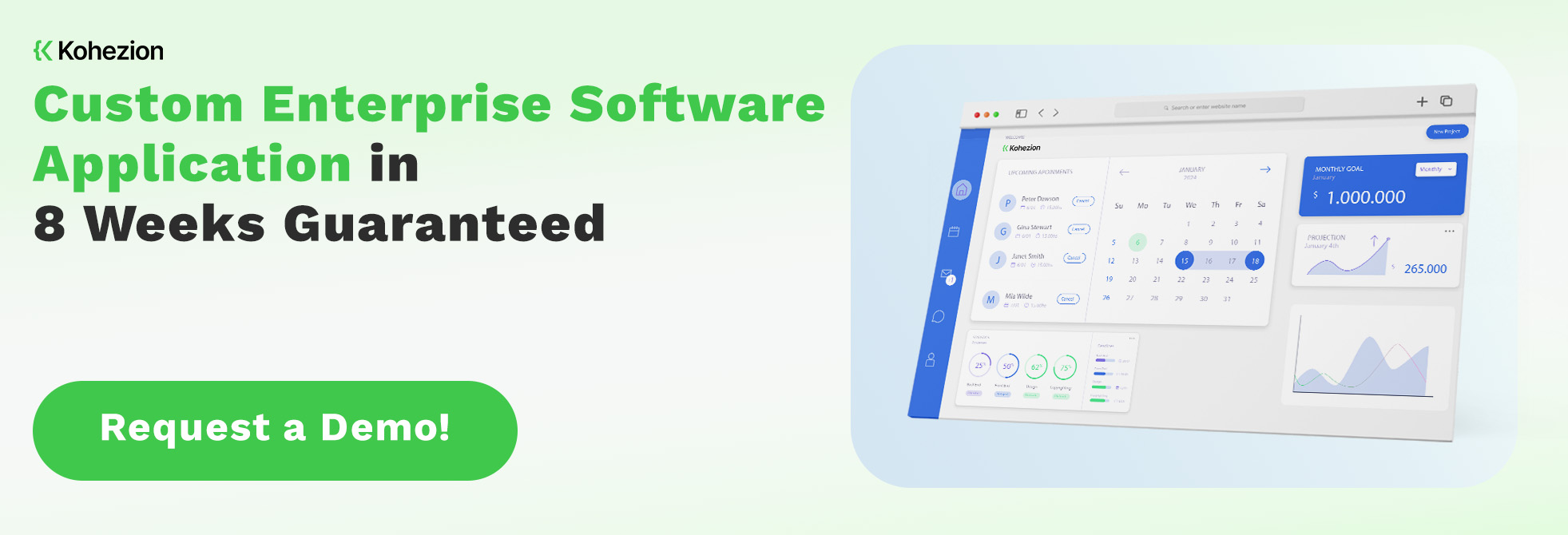You're probably familiar with traditional CRMs that involve layers of coding, but have you heard about low-code CRMs? Low-code solutions can reduce enterprise application development time by as much as 60%. They are reshaping how businesses manage customer interactions and streamline processes.
This post explains what a low-code CRM is and how you can build one, even if you're not a professional coder.
What Is a Low-Code CRM?
A low-code CRM is a customer relationship management software that simplifies creating and customizing CRM applications. It is designed for ease of use with its visual interfaces, intuitive drag-and-drop functionality, and reusable components. Even if you aren't proficient in traditional programming languages, that won't hold you back.
The goal is to democratize software development. Thanks to low-code CRM platforms, you can construct complex CRM solutions without the lengthy development time and costs associated with standard coding practices. Adapting your CRM to your specific needs and workflow is now easily accessible. You can drag a new feature into your CRM and configure it to your specifications, all with a few clicks.
Why Do You Need a Low-Code CRM?
A low-code CRM system significantly reduces the complexity and costs associated with traditional CRM solutions. It empowers your teams to make necessary changes quickly without needing a large IT department or outside consultants.
The flexibility of a low-code CRM means that as your business evolves, your CRM can easily scale with it. No more waiting around for feature updates or expensive customizations. The ability to rapidly deploy updates and new features can make a big difference in providing exceptional customer service. Low-code CRM lets your business personalize customer interactions, making for a more engaging and satisfying relationship.
Low-code CRMs also allow more of your employees to contribute to developing and refining your business processes. This means your more technically skilled staff can focus on more complex tasks while other team members handle CRM customizations suited to their skill levels.
Low-Code CRM vs Traditional CRM Development
Traditional CRM development typically demands intensive programming knowledge and involves a complex, time-intensive development cycle. This cycle often requires detailed planning, coding, testing, and deployment phases, which can span months or even years.
On the other hand, low-code CRM platforms have user-friendly visual development environments. You can use pre-built modules, templates, and components to "compose" your application. Such an approach drastically cuts down development time.
Also, with the traditional route, businesses often depend on specialized developers, which can add to long-term costs and create bottlenecks. Low-code CRM reduces this dependency, allowing in-house staff to take charge of CRM customizations and updates.
While traditional CRM development might offer unparalleled depth in customization, low-code CRM balances customization capabilities and ease of use, opening up CRM development to non-developers.
Which approach you choose depends on your unique business needs. If highly specific customizations that require deep coding are non-negotiable, traditional CRM might be the way to go. But if you prioritize flexibility, cost efficiency, and rapid deployment, a low-code CRM could be the best choice.
Benefits of Low-Code CRM
Below is a list of the advantages of using low-code CRM systems for your business.
Democratized development
Low-code CRM puts the power of development into the hands of your entire team, not just the IT department. It allows individuals from various departments with firsthand knowledge of business needs to participate in creating and fine-tuning the CRM solution. This means that the people who interact with customers daily and understand those relationships are the same people shaping the tools to manage them. The result is a CRM tool that better serves your customers and a more invested workforce.
Quick deployment
With low-code CRM, you can develop and launch applications at an unprecedented pace. The pre-built system components and out-of-the-box functionality allow ideas to go from the drawing board to live environments quickly. Unlike the cumbersome process associated with traditional CRM systems, improvements and adjustments can be made on the fly.
Flexibility to adapt to changing business processes
If market dynamics shift or a new strategy is devised, low-code CRM allows you to act swiftly, making necessary alterations without getting bogged down in complex code changes. You can easily add or modify workflows, ensuring your CRM evolves with your business model. You can also incorporate new data fields or adjust automation rules without starting from scratch. A low-code CRM can smoothly pivot as your business strategies and customer needs transform.
Cost-effectiveness
The lack of a need for specialized IT personnel needed for every tweak or addition to your CRM system translates into significant savings. This is especially important for small and medium-sized businesses, as it opens up possibilities that were previously cost-prohibitive. Plus, because deployment is quicker, you’ll realize the return on your investment much sooner.
Improved user experience
Personalized dashboards, intuitive interfaces, and smoothly incorporated workflows contribute to a CRM that looks good and works efficiently for the people using it every day. Low-code CRMs enable the creation of user-friendly and visually appealing interfaces that encourage adoption and reduce the learning curve for new users.
Users benefit from having a system better aligned with their daily tasks and goals, increasing productivity and satisfaction. Feedback mechanisms allow continuous improvement, ensuring the CRM system keeps pace with users' needs and preferences. Improved user experience leads to better data management, more accurate insights, and a higher level of service for your customers.
Simplified integration
Low-code CRMs offer ready-made connectors and the ability to craft custom integrations via common API protocols like REST and SOAP. This means seamless interoperability with other tools and software, from marketing automation platforms to financial systems, without extensive coding. With simplified integration, your low-code CRM acts as a standalone system and as the hub of a digital ecosystem that increases efficiency and data coherence across your organization.
Strong process automation
Low-code platforms are designed with robust automation capabilities that take repetitive, time-consuming tasks off your team's plate. This lets you focus on building customer relationships and driving strategic initiatives.
Automated workflows trigger actions like follow-ups, task assignments, and status updates based on predefined rules. They also reduce errors by minimizing manual data entry and the inconsistencies it can bring. This combination of operational efficiency and reliability is particularly beneficial in sectors where fast response times and precision are essential.

How to Build a Low-Code CRM with Kohezion
In this section, you’ll learn how to build your own low-code CRM system with Kohezion.

Step 1: Establishing your database
Establishing a robust database is the first step before creating your CRM. This means documenting and organizing relevant information, from customer names and contact details to transaction history and preferences.
Once your database is prepared, you've established the basis for a CRM system that's operational and ready to grow and evolve with your business.
Step 2: Creating your app using Kohezion
With its user-friendly approach, Kohezion enables you to create a custom app tailored to your business's needs without writing a single line of code. Here's how you get started:
- Choose from a range of templates or start from scratch to define the aesthetic and functional aspects of your CRM.
- Use the drag-and-drop interface to add fields, forms, and views that align with your business processes.
- Leverage built-in functions to set permissions so the right people can access the data and features they need.
Step 3: Automating and integrating processes
In this step, you'll teach your CRM to perform tasks automatically based on triggers you define and to talk to other software systems you use in your business operations. These tasks may include setting up automated email notifications for new leads or support tickets, scheduling regular data backups, and creating workflows that move prospects through your sales pipeline based on their engagement.
It’s also easy to integrate your CRM with third-party applications. Kohezion offers the ability to interconnect and synthesize disparate systems to facilitate seamless data flow, whether it’s accounting software, your email platform, or your customer service tools.
Automating and integrating your processes saves time and ensures consistency and accuracy in your customer relationship efforts, making your CRM a powerful asset to your team.
Step 4: Launching and distributing your app
Before launching, test your CRM to catch any bugs and ensure a smooth rollout. Choose a suitable subdomain that reflects your brand for your new app, or set up a custom domain.
Launching your CRM is just the beginning of a journey toward continual improvement and adaptation. The ultimate payoff is seeing users interact with your CRM, benefit from its features, and witness increased productivity.
Conclusion
Creating a low-code CRM brings many advantages, from the democratization of development to the cost-effective nature of these platforms. Each of these benefits plays a pivotal role in leveling the playing field for businesses of all sizes.
Low-code CRM platforms like Kohezion offer the toolset to build a system tailored precisely to your needs with less time, money, and technical expertise necessary than ever before.
With each step of the CRM-building process, keep your focus on creating value for your team, your operations, and especially your customers. This will equip your business to survive the challenges and thrive in the future.
Now, why not take that first step toward building your own low-code CRM? Contact us today to learn more about how Kohezion can help you build a low-code CRM platform tailored to your business needs.
Start building with a free account
Frequently Asked Questions
Low-code solutions integrate with existing systems through built-in connectors, APIs, and data synchronization tools. They easily communicate with external systems, databases, and applications to create a seamless information flow.
Thanks to user-friendly interfaces and intuitive tools for customization and automation, non-technical staff can effectively manage low-code CRMs, reducing reliance on IT expertise.
When selecting a low-code CRM, consider business requirements, ease of use, integration capabilities, security features, scalability, customer support from the vendor, and cost implications including maintenance and training.
The typical implementation timeframe for a low-code CRM platform can range from a few days to several weeks, depending on the business's requirements and the degree of customization needed.



